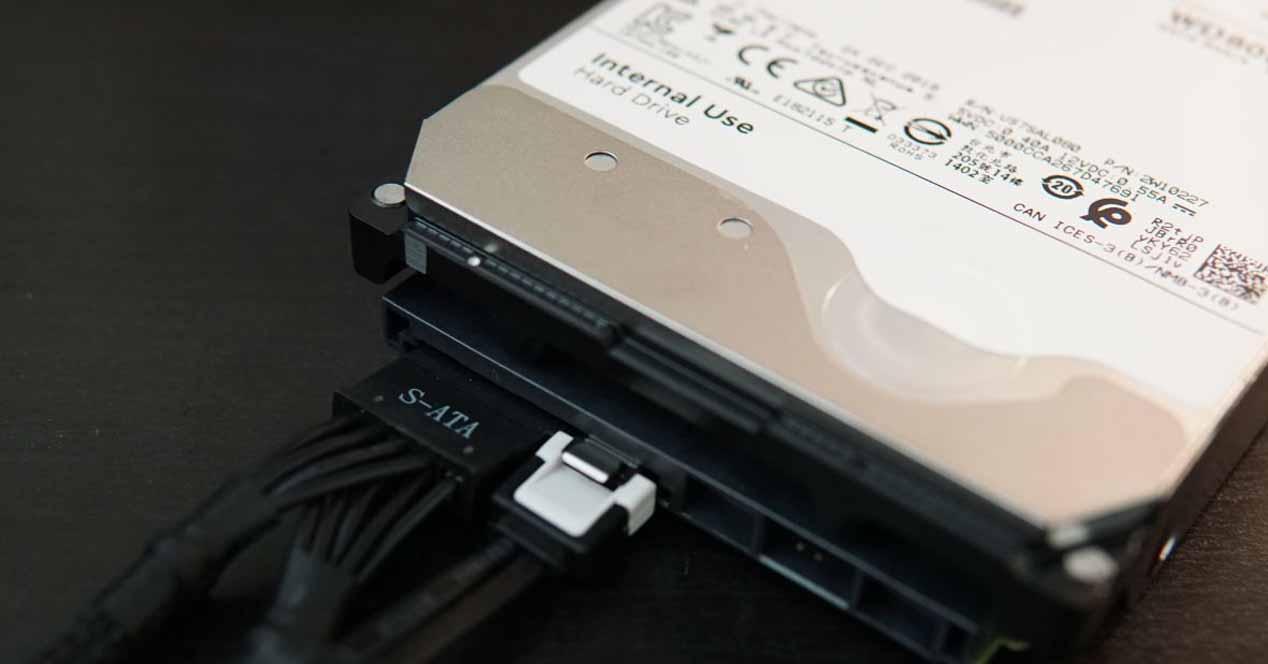In fact, both options are perfectly fine for storing data in bulk and avoid using an SSD, which has a write limit for this purpose. However, one option and the other have their pros and cons and depending on what kind of use you are going to give it, one option may be more beneficial to you than the other. Let’s see what they both have to offer to see which one best suits your needs.
Internal or external hard drive, advantages and disadvantages
In terms of performanceNowadays there is no difference since any external hard drive connected via USB 3.0 interface already equals the performance of a mechanical hard drive connected via SATA 3. We obviously assume that for mass storage we let’s choose a mechanical hard drive and not an SSD, because as we have already mentioned these have a set number of erase and write cycles and purchasing a separate drive for mass storage is precisely to prevent wear.
One of the biggest advantages of having an internal hard drive is undoubtedly its convenience: it does not take up space because it is installed inside the computer and therefore you no longer have any peripherals or devices. cables on the desktop as you would with an external drive; Plus, since it’s always connected, it always works and that means you always have it available when you need it.
An external drive with a USB connection should be kept separate, i.e. it should be stored in a drawer or cupboard. When you want to use it, you have to go out there and connect it to your PC via USB, which can be a nuisance just because you have to do it and at the same time because it takes up space on the table. or anywhere to put it. This is avoided, to some extent, with a DAS or fixed external drive, since you can still have it on the table and always connected, but only turn it on when you need it, although it is true that even then you will have to connect it to the power supply and you will increase the number of cables and connections required outside the team.
The biggest advantage of using an external USB drive is, however, that it allows you to connect it only when you need it and therefore its durability is maximized. Likewise, it allows you greater versatility as nothing prevents you from having multiple external drives for different purposes and connecting the one you need each time, or even several at the same time if your PC has enough ports. USB available. And when you need more storage, just buy another external drive and that’s it; Obviously, if you prefer an internal drive, you can also buy others and install them, but you will have to open the PC all the time and connect its wiring from the inside, and also the PC box and the connections on the board. have a limit.
Finally, an external hard drive with a USB connection has one main advantage over using an internal drive, which is that it is much easier to transport it from one place to another to use your data. on other computers or devices. This is something that using internal drives would be a nuisance as you would have to open the PC to take it apart and then mount it on the other.
Conclusion, which option is the best?
As always, it all depends on your needs. If you intend to have an extra drive in your computer for mass storage to avoid using the SSD for it but are going to be using it sporadically, the ideal is to have an internal drive large capacity because it will be much more comfortable for you and, really, you can forget to connect or disassemble anything.
However, if you are a user who uses mass storage extensively then the best option for you would probably be to acquire a large capacity DAS or a fixed disk as this will allow you to always have your data accessible but only when you are using it. need it. il, protecting the integrity of the device slightly more compared to an always-on internal drive.
Now, if you are a laptop user, we would tell you don’t hesitate and go for an external hard drive with a USB connection, and indeed a 2.5 inch one so you don’t need the extra power. . Adding an internal drive to a laptop can be a headache to install, and it also adds fuel consumption and weight to the equipment. However, with a 2.5 inch external drive, you can still make it accessible and have it come and go with your laptop without much hassle. Plus, since there are 2.5 inch external drives with a capacity of up to 5TB, it’s not that you will run out of space quickly.










